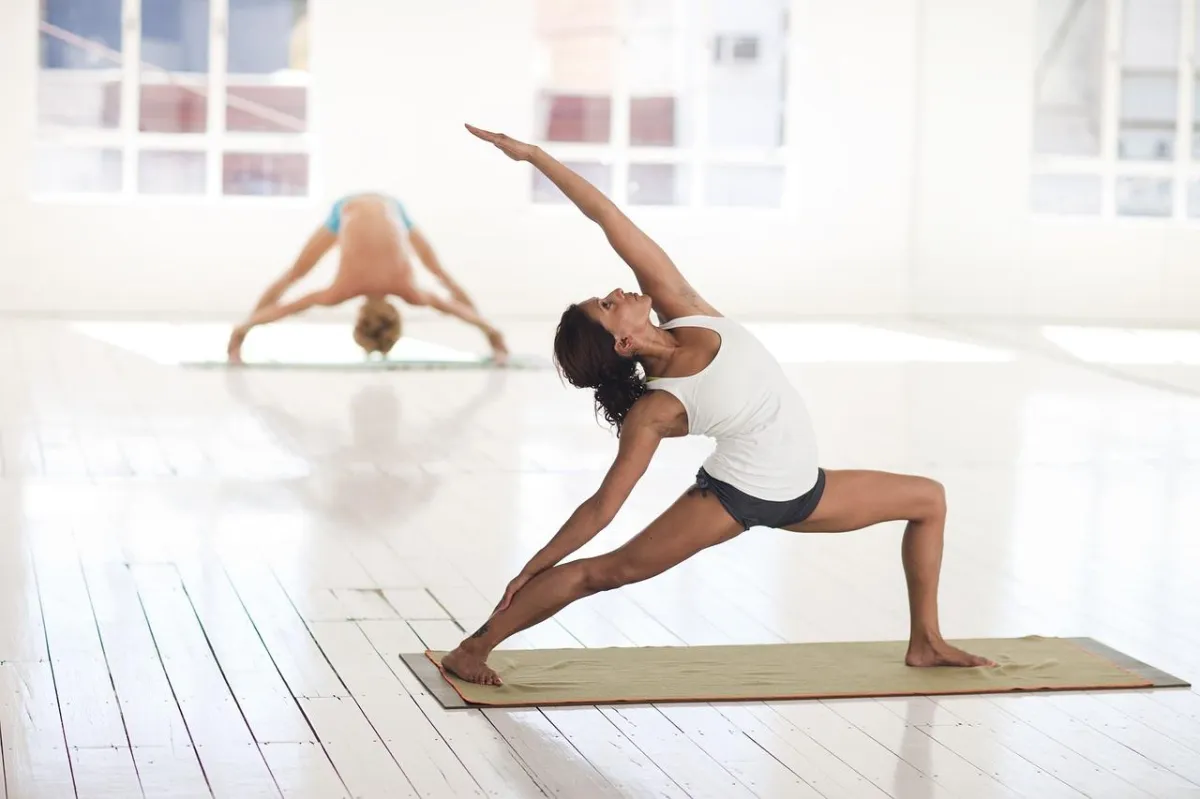Our services are currently being offered at a special promotion of a 20% discount on the final price valid only, from September 1 to September 31. Use code HPAC10 at checkout to claim!
BLOG

Holistic Fitness—Integrating Movement and Wellbeing
Holistic Fitness—Integrating Movement and Wellbeing
In today's fast-paced world, where hectic schedules and constant connectivity dominate our lives, finding balance and maintaining overall wellbeing is more crucial than ever. Holistic fitness, which emphasizes the integration of physical movement with mental and emotional health, offers a transformative approach to achieving optimal wellness. In this article, we explore the importance of incorporating gentle movements into your daily routine, highlighting how it can positively impact your overall health and vitality.

Why Gentle Movements Matter
Gentle movements, such as yoga, tai chi, qigong, and Pilates, play a pivotal role in holistic fitness by nurturing the interconnectedness of body, mind, and spirit. Unlike high-intensity workouts that can sometimes place undue stress on the body, gentle movements focus on fluidity, breath control, and mindfulness. These practices not only improve physical flexibility, strength, and balance but also promote mental clarity and emotional resilience.
Physical Benefits
Engaging in gentle movements on a regular basis offers a multitude of physical benefits. For instance, yoga enhances flexibility and joint mobility, reducing the risk of injuries and enhancing overall posture. Tai chi and qigong improve circulation and balance, which is particularly beneficial for older adults looking to maintain independence and reduce the likelihood of falls. Pilates strengthens core muscles, supporting spinal alignment and enhancing overall body stability.
Mental and Emotional Wellbeing
Beyond physical health, gentle movements significantly contribute to mental and emotional wellbeing. These practices encourage mindfulness, a state of present-moment awareness that reduces stress levels and promotes relaxation. The rhythmic breathing techniques inherent in yoga, tai chi, and qigong stimulate the parasympathetic nervous system, eliciting a calming effect that counteracts the body's stress response.
Moreover, regular participation in gentle movements has been linked to improved mood regulation and reduced symptoms of anxiety and depression. The mind-body connection fostered through these practices empowers individuals to cultivate a deeper sense of self-awareness and emotional balance, enhancing overall quality of life.

Incorporating Gentle Movements into Your Routine
Integrating gentle movements into your daily routine doesn't have to be daunting. Start by dedicating just 15 to 30 minutes each day to practice yoga poses, tai chi forms, or Pilates exercises. Choose a time that aligns with your schedule and commit to making it a daily habit. Whether you prefer practicing in the morning to invigorate your day or in the evening to unwind and release tension, consistency is key to experiencing the full benefits of these holistic fitness practices.
Creating a Holistic Fitness Plan
To create a holistic fitness plan that incorporates gentle movements effectively, consider the following steps:
1. Assess Your Goals: Determine your fitness goals, whether they involve improving flexibility, reducing stress, or enhancing overall vitality.
2. Choose Suitable Practices: Explore different gentle movement practices to find ones that resonate with your preferences and physical capabilities.
3. Schedule Regular Sessions: Block out dedicated time in your daily or weekly schedule for gentle movement sessions. Treat these sessions as non-negotiable appointments with yourself.
4. Combine with Other Wellness Practices: Complement gentle movements with other holistic wellness practices, such as healthy nutrition, adequate sleep, and mindfulness meditation.
5. Monitor Progress: Track your progress over time, noting improvements in physical flexibility, mental clarity, and emotional resilience. Celebrate achievements, both big and small, along your holistic fitness journey.
Keywords for SEO: holistic fitness, gentle movements, yoga benefits, tai chi benefits, Pilates exercises, mental wellbeing, emotional balance, mindfulness practices
BLOG

Holistic Fitness—Integrating Movement and Wellbeing
Holistic Fitness—Integrating Movement and Wellbeing
In today's fast-paced world, where hectic schedules and constant connectivity dominate our lives, finding balance and maintaining overall wellbeing is more crucial than ever. Holistic fitness, which emphasizes the integration of physical movement with mental and emotional health, offers a transformative approach to achieving optimal wellness. In this article, we explore the importance of incorporating gentle movements into your daily routine, highlighting how it can positively impact your overall health and vitality.

Why Gentle Movements Matter
Gentle movements, such as yoga, tai chi, qigong, and Pilates, play a pivotal role in holistic fitness by nurturing the interconnectedness of body, mind, and spirit. Unlike high-intensity workouts that can sometimes place undue stress on the body, gentle movements focus on fluidity, breath control, and mindfulness. These practices not only improve physical flexibility, strength, and balance but also promote mental clarity and emotional resilience.
Physical Benefits
Engaging in gentle movements on a regular basis offers a multitude of physical benefits. For instance, yoga enhances flexibility and joint mobility, reducing the risk of injuries and enhancing overall posture. Tai chi and qigong improve circulation and balance, which is particularly beneficial for older adults looking to maintain independence and reduce the likelihood of falls. Pilates strengthens core muscles, supporting spinal alignment and enhancing overall body stability.
Mental and Emotional Wellbeing
Beyond physical health, gentle movements significantly contribute to mental and emotional wellbeing. These practices encourage mindfulness, a state of present-moment awareness that reduces stress levels and promotes relaxation. The rhythmic breathing techniques inherent in yoga, tai chi, and qigong stimulate the parasympathetic nervous system, eliciting a calming effect that counteracts the body's stress response.
Moreover, regular participation in gentle movements has been linked to improved mood regulation and reduced symptoms of anxiety and depression. The mind-body connection fostered through these practices empowers individuals to cultivate a deeper sense of self-awareness and emotional balance, enhancing overall quality of life.

Incorporating Gentle Movements into Your Routine
Integrating gentle movements into your daily routine doesn't have to be daunting. Start by dedicating just 15 to 30 minutes each day to practice yoga poses, tai chi forms, or Pilates exercises. Choose a time that aligns with your schedule and commit to making it a daily habit. Whether you prefer practicing in the morning to invigorate your day or in the evening to unwind and release tension, consistency is key to experiencing the full benefits of these holistic fitness practices.
Creating a Holistic Fitness Plan
To create a holistic fitness plan that incorporates gentle movements effectively, consider the following steps:
1. Assess Your Goals: Determine your fitness goals, whether they involve improving flexibility, reducing stress, or enhancing overall vitality.
2. Choose Suitable Practices: Explore different gentle movement practices to find ones that resonate with your preferences and physical capabilities.
3. Schedule Regular Sessions: Block out dedicated time in your daily or weekly schedule for gentle movement sessions. Treat these sessions as non-negotiable appointments with yourself.
4. Combine with Other Wellness Practices: Complement gentle movements with other holistic wellness practices, such as healthy nutrition, adequate sleep, and mindfulness meditation.
5. Monitor Progress: Track your progress over time, noting improvements in physical flexibility, mental clarity, and emotional resilience. Celebrate achievements, both big and small, along your holistic fitness journey.
Keywords for SEO: holistic fitness, gentle movements, yoga benefits, tai chi benefits, Pilates exercises, mental wellbeing, emotional balance, mindfulness practices








